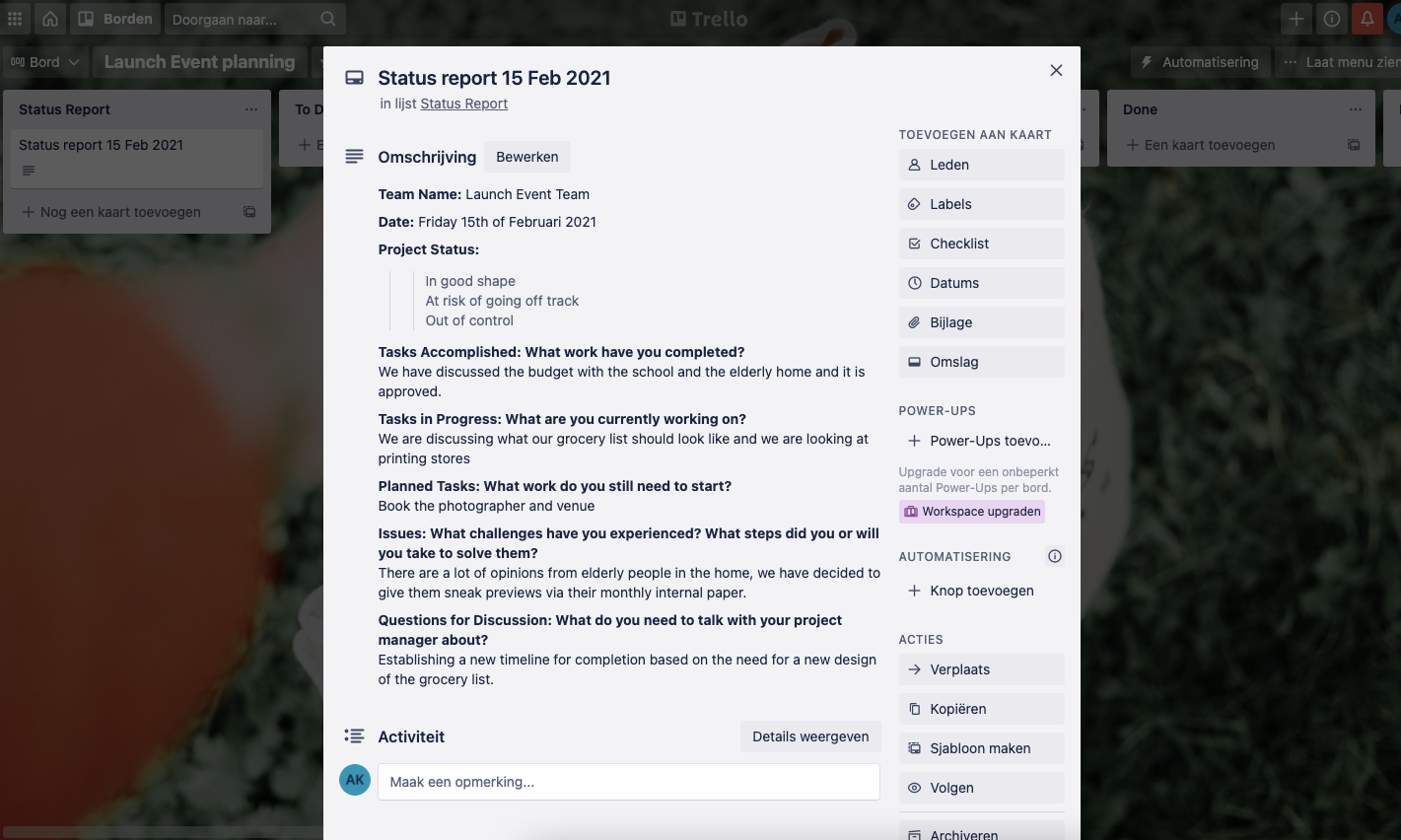Chapter 4: Executing, Monitoring and Controlling

Planning when and how to monitor and control the project
Gabby: “It’s time to execute our plan for the launch event! Executing is the process of working through the project plan. This involves putting your project plan into action. The project plan serves as a guide to help ensure that the deliverables — the intended goals of the project — will be completed properly, on time, and within the budget.
As work is being executed, you should strive to:
- Use your budget and resources as planned.
- Manage the risks you identified.
- Stay focused only on the work you described in your project’s scope.
- Meet your milestones.
- Document your progress in an organised way.
- Communicate your project’s progress regularly and effectively to your stakeholders.
By checking on your progress, evaluating whether project goals are being achieved in the best possible way, avoiding scope creep along the way, and being prepared to adjust their path if necessary, you are engaged in the monitoring/controlling process.”

Activity 9: Using Project Management Tools
Gabby: “We use Trello to understand where we are in the project and divide all the task in the way that is pictured below.
Register yourself via Trello.com and create a Trello account. Start a new board where you recreate the topics that are pictured below (some will be visible when you scroll to the right in your own board):
- Status Report;
- To Do;
- Doing;
- On Hold;
- Done;
- Next Week;
- Backlog.”


Go to the next Chapter
Key terminology
Click on the words to expand the window and understand what they mean:
Acceptance criteria:
Activity:
Assumption:
Closing process:
Communication management:
A component of the project, program, or portfolio management plan that describes how, when, and by whom information about the project will be administered and disseminated.
Constraint:
Deliverable:
Executing process:
Initiating process:
Lessons learned:
Milestone:
Milestone planning:
Monitoring and controlling process:
Planning process:
Project:
Project Charter:
Project Management
Project Manager
Project Schedule
An output of a schedule model that presents linked activities with planned dates, durations, milestones, and resources.
Project Team
A set of individuals who support the project manager in performing the work of the project to achieve its objectives.
Scope:
Scope creep:
Sponsor:
Stakeholder:
Stakeholder register
Resource
A team member or any physical item needed to complete the project.
Risk:
An uncertain event or condition that, if it occurs, has a positive or negative effect on one or more of the project objectives.
Work Breakdown Structure (WBS):
A hierarchical decomposition of the total scope of work to be carried out by the project team to accomplish the project objectives and create the required deliverables.

